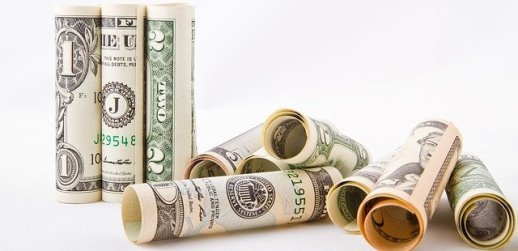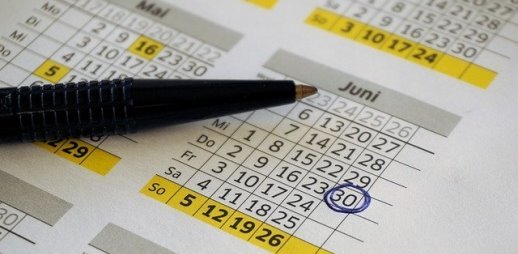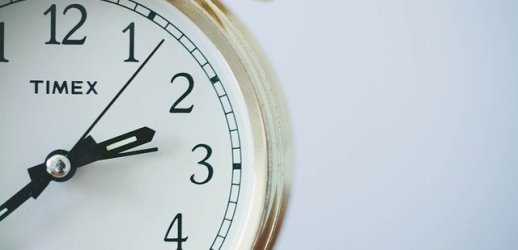Increase Your Passive Income By Knowing How Dividends Work
The big question of the day: How do dividends work?
Since dividends may be a part of your investment plan. And certainly, making money from stock dividends is a big focus area here at Dividends Diversify.
So, it makes sense to address this important question for you. Because as dividend investors, we must know exactly how stock dividends work.
Let’s not delay…

Disclosure: At no cost to you, I may get commissions for purchases made through links in this post.
How Do Dividends Work? | Key Takeaways
1. Dividends are 1 means for companies to share their financial success with their stockholders.
2. That success comes in the form of routine cash payments called dividends. For example, if you own 100 shares of a company’s stock. And they pay a 25 cent per share dividend. You will receive $25.
3. For a beginner, dividend investing may seem to be a complex topic. There are many terms and concepts to be understood before investing. But before we are done, I will have dividends explained in simple terms.
4. So anyone can be a successful dividend investor. With a little knowledge about the subject. And by investing in good dividend stocks using a long-term buy-and-hold investment plan.
With those key points covered. Let’s dive into the details to improve your knowledge about dividend investing. Then you will know exactly how dividends work.
Looking for something a little different? Then check out our dividend investing archives. A large group of dividend stock reviews, portfolio tips, and educational resources. Neatly organized and at your service!
What Are Dividends?

A dividend is a distribution of economic value. The distributions are made by a company to the owners of its stock.
Distributions can come in a variety of forms. They are made from a company’s profits. Dividends are 1 very important way for stockholders to share in the financial success of a company.
But this is a very broad definition. With a lot of implications. So, I will break it down for you.
How Stock Dividends Work: Types Of Dividends
First of all, we know dividends are distributions that have economic value. But, this value can be transferred in several different forms. To understand how dividends work, we must know the different types of dividends.
Forms Of Dividend Distributions
Cash: we all understand good old fashion cash. Fortunately, this is the most common type of dividend distribution. And will be the primary focus of today’s article about how dividends work.
Stock: Instead of cash, a company may choose to give its shareholders additional shares of its stock.
Property. In rare cases, the dividend distribution is in the form of property. Or, some type of physical asset.
Classification Of Dividends For Tax Purposes
Furthermore, each of these dividend types is also classified in 1 of 2 ways for tax purposes.
Qualified: Most dividends are qualified dividends. A qualified dividend is taxed at a lower rate.
To be eligible, certain requirements must be met by the dividend payer. And the investor must hold the stock for a minimum time.
But let me generalize. Buy and hold most U.S.-based corporations’ stock. Then you will usually receive a qualified dividend. That is eligible for preferential tax treatment. The specific tax requirements are outside of the scope of this article,
Non-qualified: Otherwise, a dividend is non-qualified. And subject to higher ordinary income tax rates. These dividends are also called ordinary dividends.
Dividends On Different Types Of Stock
Finally, dividends are paid on 2 types of stock.
Common stock: Holders of common stock have the right to vote on important company matters. Like electing members of the independent board of directors. The board represents your interests as a stockholder.
Preferred stock: While preferred stock does not have voting rights. These shares are granted preferential treatment for the receipt of dividends.
Key takeaways: There are several types of dividends. It may seem complex. But it doesn’t have to be.
So, let’s keep it simple. The dividend stocks we are focused on today:
- Pay cash dividends on common stock
- Are qualified for tax purposes
Most corporations and investors, including myself, ignore everything else when it comes to the different types of dividends.
Why Do Companies Pay Dividends?

I have 6 primary reasons why companies pay dividends.
- Their profits must be allocated in some way
- Desire a balanced approach to allocating those profits
- Wish to attract new and maintain current investors
- Want to provide investors with a return on their investment
- Believe paying dividends demonstrates their financial strength
- Want to provide underlying support for the stock price
Key takeaways: Companies pay dividends for a variety of reasons. What is the most important reason for a dividend investor? Dividends provide a return on investment in the form of regular and recurring cash payments.
How Come Some Companies Do Not Pay Dividends?
Why would a company choose not to pay a dividend? That’s a fair question from my standpoint. Here are several reasons why a company would choose not to pay a dividend.
The reasons come back in some way to capital allocation decisions. A company has only so much access to capital (cash). They must make choices.
So, here are the drawbacks to dividends. To provide a balanced discussion about dividend stock pros and cons.
1. The company is allocating capital to profit growth initiatives.
In these cases, management feels investors will receive a better return on their investment if the company puts its capital toward internal growth and acquisitions, not dividends.
In theory, business growth and synergies from acquisitions will result in share price appreciation. And provide a greater return on investment than paying shareholder dividends.
But, to receive cash, the investor must sell a portion of the investment holding. Or, all of it. If he or she chooses to do so.
2. The company prefers allocating capital to share buybacks
Some companies believe that buying back shares of their stock is a better use of cash. This results in fewer shares in the stock market. And, all else being equal, higher earnings per share.
In turn, higher earnings per share tend to generate share price appreciation. Of course, there is no guarantee that share prices will rise. But that’s the theory.
3. The company is having financial problems.
To pay a cash dividend, a company must have cash. Or, access to cash through loans.
First of all, when a company falls on hard economic times, regular recurring dividend payments may not get approved by the board of directors. Furthermore, a previously paid dividend may be suspended or eliminated.
Key Takeaways: A company is not required to pay dividends. And, some choose not to for specific reasons.
How Dividends Work: They Are Determined By Dividend Policy
Dividend policy has its roots in dividend relevance theory. But let’s dig in and talk about the actual behaviors that create dividend payments from companies. Rather than theory.
First of all, a company’s board of directors must approve each dividend payment. So, does the board get together and say hey “let’s pay everybody a dividend today”?
The answer to that question is no. More typically, a board has defined a dividend policy and distribution guidelines.
Furthermore, the dividend policy sets the rules for delivering cash dividends to shareholders. And the dividend policy must be determined in context with other cash needs.
Finally, dividend policy is important and every company has one. The policy may not be formalized. And, it may never be communicated externally.
Key takeaways: A company’s dividends are determined by its dividend policy. Everyone company has a dividend policy. Whether they choose to communicate it to us. Or, not.
How Are Dividends Paid On Shares?

How to receive dividends? There are 3 main ways that dividends are paid
- Cash deposit in your brokerage account
- A check delivered in the mail
- Additional shares of stock from a dividend reinvestment plan
First of all, the most typical way to receive a dividend is a cash deposit in your brokerage account. Because most of us buy shares of stock online using a brokerage account.
I use Webull. It is a good option if you need a stockbroker. Webull provides excellent stock trading and research capabilities.
So buy shares online in your brokerage account. And the dividends from your stocks will be deposited in cash when paid.
Furthermore, a minority of investors may receive cash dividend checks mailed to their physical address. This happens if you hold the paper stock certificate representing your ownership in shares.
Finally, a participant in a dividend reinvestment plan (DRIP) receives their dividends in additional shares of stock. DRIP’s still exist today. But just like holding physical shares, they have lost popularity.
It’s just as easy to have your broker automatically reinvest your dividends. If that is your desire.
Key takeaways: That’s how dividend payouts work. We live in a digital age. So the most common way to buy stocks is by using an online brokerage account. Do so and your dividends are paid to that account in the form of a cash deposit.
Now you know the answer to the question: how are dividends paid? Let’ ‘s move to the timing of those dividend payments.
How Stock Dividends Work: When Are Dividends Paid?

So let’s assume we have a company choosing to share its profits with investors. Then how often do companies pay dividends?
The answer is: a company’s dividends are paid when it decides to do so. As authorized by the board of directors.
That said, there are several dividend payment patterns that you should be aware of when it comes to regular and recurring dividends.
Companies that pay recurring dividends normally choose 1 of the 3 payment patterns. And stick with their chosen pattern over the long term. The dividend payment patterns are:
- Monthly dividends (12 times per year)
- Quarterly (4 times per year)
- Semi-annually (2 times per year)
Most U.S.-based dividend payers choose to pay their dividends quarterly. And these are the stocks that I focus on.
Finally, a company may choose to declare and pay a special 1-time dividend. Typically this is done by a company that has met with significant financial success. And they want to share that financial success. Without committing to do so again in the future.
Key Takeaways: Dividends are paid when a company chooses to pay them. But good dividend stocks stick to a consistent pattern. That usually means quarterly dividends. 4 dividends per year, at 3-month intervals.
How To Get Dividends: Important Dates To Understand
A company approves, declares, and communicates each dividend payment. At the time of communication, several important dates are established.
They follow in the sequence as presented below.
Declaration date: This is the day a dividend payment is announced to the public. Companies do this by issuing a press release.
Ex-dividend date: To receive the dividend that has been declared, an investor must purchase their stock BEFORE the ex-dividend date that has been set by the company.
Record date: The record date falls 2 days after the ex-dividend date. All shareholders as of the record date receive the dividend that has been declared. An investor will be a shareholder of record by owning the stock at the close of trading on the day before the ex-dividend date.
Payable date: The dividend payable date is the day an investor who held shares on the record date receives the cash dividend.
Key Takeaways: To get the next dividend, an investor must own shares at the close of trading the day BEFORE the ex-dividend date. But let’s keep it simple. Long-term buy-and-hold investors will receive every dividend the company pays no matter the timing. Then there is little need to concern yourself with all of these dates.
How Long Do You Have To Hold A Stock To Get The Dividend?

You can receive a company’s dividend by holding its stock for as little as 1 day. As long as you hold at the close of trading on the day before the ex-dividend date.
On the other hand, there is little value to this. First of all, an otherwise qualified dividend for tax purposes will lose its qualified status. Because the holding period requirement will not be met.
And all things being equal (which they usually are not), the stock price adjusts down on the ex-dividend date. It does so in an amount equal to the value of the dividend. Because a new owner by your sale of the stock to them would not be entitled to the next dividend.
Key Takeaways: You can hold a stock for as little as a day. And be entitled to the dividend. But there is little to no value in doing so. Focus on investing in quality dividends stocks. And hold them long-term.
How Do You Find Stocks That Pay Dividends?
To receive dividends. You must know how to find dividend stocks. First, we will take a broad view. Then understand how to hone in on specific stocks.
Industries Where Dividend Stocks Reside
Dividend stocks are typically clustered in certain industries. These industries are characterized by steady long-term demand for their products and services.
Steady demand leads to consistent profits. And fosters a company’s confidence about paying out a portion of those profits as dividends regularly.
Here are several examples of industries with dividend stocks. And an example from each industry.
Health Care (Johnson & Johnson)
Pharmaceuticals (AbbVie)
Utilities (NextEra Energy)
Gosh. Invest in these 6 stocks. And you would have a nice little diversified dividend stock portfolio. Filled with Dividend Kings, Aristocrats, and Achievers. More on them in a moment.
Identifying Specific Dividend Stocks

To find dividend stocks in these industries or others, you can use online stock screeners. Put in something as simple as your desired dividend yield range. And you will be presented with several options.
Morningstar has an excellent stock screener. And once you find a stock you like, they provide outstanding investment analysis. I’ve been using Morningstar for more than 15 years.
But I prefer stocks that have a record of increasing their dividends each year. And have put together a model portfolio that includes dozens of these good dividend stocks. Be sure to check out the Dividends Diversify model portfolio before you go. And all of our dividend investing resources.
Also, the following lists are excellent resources for developing a dividend stock watch list.
First of all, we have the Dividends Kings. They are companies that have paid and increased their dividends for at least 50 years in a row.
Furthermore, there are Dividend Aristocrats. They represent companies trading in the S&P 500 stock index. Also, they have paid and increased their dividends for at least 25 consecutive years.
Finally, we have the list of Dividend Achievers. The Achievers are dividend stocks that have raised dividends for at least 10 years in a row.
Also, I subscribe to the Simply Investing Report. It is another great source for high-quality dividend stock recommendations. And analysis.
Key Takeaways: Dividend stocks are clustered in certain industries. Using stock lists or screeners, you can easily develop a dividend stock watch list of 5-10 dividend stocks you may be interested in purchasing. Then lean on good sources to wisely pick your dividend stocks. And recommendations.
How To Evaluate A Dividend Stock & Its Dividend
So, you now have a dividend stock watch list. But what dividend metrics should you check out before investing.
Let’s discuss some dividend ratios you will want to understand. Using a simple example to help explain how dividends work.
How Do Dividends Work: Dividend Rate Per Share

When a company declares a dividend, they communicate it as a dollar amount per share. So, a typical press release announcing the next dividend might sound like this…
XYZ Company is proud to announce that its board of directors has approved the next quarterly dividend of 25 cents per share. The dividend will be payable on March 15, 2021, to shareholders of record on February 10, 2021.
If you own 100 shares of XYZ company at the close of trading the day before the ex-dividend date, you will be entitled to 25 cents for each share owned. Therefore, on March 15, 2021, you will receive $25. As a cash deposit into your online brokerage account.
Key Takeaways: For each dividend payment, a company communicates the amount per share each investor will receive
How Dividends Work: Dividend Yield

Next, we have the definition of dividend yield. It is a company’s annual dividend rate divided by the stock price per share.
Let’s continue with our example using XYZ company. I will assume that XYZ consistently follows a quarterly dividend payment pattern. And until they announce otherwise, XYZ will pay a 25 cent per share dividend every 3 months into the future.
The annual dividend rate is, therefore, $1 per share. Calculated as 4 quarterly dividends per year times 25 cents.
And let’s say XYZ stock is trading at $20 per share. So, we have a dividend yield of $1 annual dividend per share divided by $20. Or, a 5% dividend yield. That’s how dividend yield works.
But, dividend yields change every day. Because they have an inverse relationship with a stock’s price. And we know how quickly stock prices can change.
So, as a stock price rises. Its dividend yield falls. And, vice-versa.
Key Takeaways: Dividend yield is calculated as the latest dividend payment (annualized) divided by the current stock price. Dividend yields change daily and move in the opposite direction of a stock’s price.
How Dividends Work: Dividend History And Dividend Growth
There are 2 considerations when looking at a company’s dividend history: longevity and dividend growth.
First of all, how long has the company been consistently paying dividends? Furthermore, how many consecutive years has the company increased its dividend?
In either case, long histories are usually better. They indicate the sustainability of a company’s business model. And their commitment to paying recurring dividends to shareholders.
Most companies publish their dividend histories on their investor relations websites.
Key Takeaways: A company with a long and strong history of paying rising dividends is a good indication of a quality dividend stock. These stocks are perfect for dividend growth investing.
How Do Dividends Work: Dividend Payout Ratio
A company’s dividend payout ratio tells us a lot. First of all, it tells us how much of a company’s financial resources are being paid out to shareholders as dividends.
Furthermore, the dividend payout ratio gives us clues about current dividend safety. And future dividend payment capacity.
You can look up the dividend payout ratios on the internet. But I prefer using the company’s financial statements.
I look at dividend payout ratios in 2 ways. First dividends per share divided by earnings per share.
But the problem with using earnings is the accounting rules. For any given time and for certain industries they can be confusing. And lead to a poor assessment of a company’s dividend. Not always. But sometimes.
So, I also check the dividends paid against free cash flow. Since our dividends are paid from cash.
In either case, a lower dividend payout ratio is better. It indicates the company has ample room to increase its future dividends. Or, withstand an earnings drop without having to reduce the dividend.
Key Takeaways: The dividend payout ratio is a very useful tool. To evaluate a company’s dividend payment capacity. And dividend safety. This leads us to more discussion about safe dividends.
How Do Dividends Work: Dividend Safety

When I think about dividend safety, this is what I ask myself. I ask if the company’s dividend is safe from suspension or a reduction for the foreseeable future.
In the end, dividend safety is a judgment call. But some analysts create metrics and use them to give a stock a quantitative dividend safety score.
Those who create a dividend safety score. All do it a little differently. Furthermore, no one can say for sure what will happen to a business and its dividend in the future. And how the future will impact the safety of the dividend.
With that said, here are some good information points to look at. To make a judgment on dividend safety. Some we have already discussed.
- Dividend payout ratios: lower is safer
- History of dividend payments: long and stable is safer
- Dividend yield: lower is safer
- Free cash flow generation: More is safer
- Debt levels: Lower is safer
- Credit ratings: Higher is safer
Key Takeaways: When it comes to investing in dividend stocks for the long term, dividend safety may be the most important factor. Nothing can destroy the value of a dividend stock portfolio faster than dividend reductions.
How Dividends Work: Stock Valuation
While not a dividend metric per se. Investing in anything comes down to value.
For example, would you pay $250,000 for a house? When similar houses in the same neighborhood have recently sold for $200,000. Of course, you would not. The same goes for dividend stocks.
It’s never a good idea to overpay for a dividend stock. On the other hand, high-quality dividend stocks with safe dividends rarely represent “good value”. Or, “go on sale”.
Morningstar’s research includes a recommended fair value price for each dividend stock. I always look at that before I invest. But, there are other tools. Let’s discuss.
Dollar-Cost Average Into Dividend Stocks
One way to get around this is dollar-cost averaging (DCA). DCA means making regular purchases of stock in the same dollar amount.
Doing so will mean some purchases will be at lower prices and some higher. As the stock market and the stock price fluctuate. Overall, you get a good average price over a longer time. And have less risk of overpaying at any 1 single point.
Whether you DCA or not, it’s still a good idea to look at a dividend stock’s valuation. Before making a purchase.
Use A Dividend Discount Model As A Valuation Tool
I use several different tools. But the valuation method I would like to mention today is the Gordon Growth Model. It is one form of what are more generically known dividend discount models.
In brief, the Gordon Growth model uses the time value of money. And tells an investor how much a dividend stock is worth today. Based on the expected stream of dividend payments in the future.
The Gordon Growth model isn’t perfect. But it is an easy tool to use for a quick check on a dividend growth stock’s value.
Key Takeaways: The best dividend stocks can rarely be purchased for a cheap price. But it’s a good idea to do a check on the value before you buy. Or, just invest regularly to benefit from dollar-cost averaging.
That concludes this section on dividend stock metrics. Those are things you may want to review before investing your hard-earned dollars in any dividend stock.
Let’s handle a few other important frequently asked questions. Before we wrap up.

What Can You Do With Your Dividends?
Once you receive a dividend it is yours. The company cannot take it back.
Taxes may be due on a small portion of the dividend, but that’s it. After taxes, the rest of the dividend is yours to do as you please.
You can do several things with your dividends. Yes. You can spend them.
But I recommend options 2-4 listed below. They represent different options for how to make dividends work for you. And create a dividend snowball effect.
4 things you can do with your dividends:
- Spend them
- Reinvest them back into the stock that paid them
- Buy more shares of a different dividend stock
- Reinvest them into another type of investment
Key Takeaways: The dividends you receive are yours to do as you please. However, taxes may be due. Speaking of taxes…
How Do Dividends Work As They Relate To Your Taxes?

In most cases, you will be required to pay taxes on the dividends you receive. But, the amount of tax depends on your specific tax situation.
In the best case, no taxes will be due. But this may only be a minority of cases.
Furthermore, it depends on the type of dividend stock you invest in. As we discussed, some company’s dividends are “qualified” and receive preferential tax treatment. In the form of lower tax rates.
Other company’s dividends are not qualified. And are taxed as ordinary income.
So, when it comes to the amount of your taxes on dividends. Do the research specific to your situation. Or consult with a tax expert.
Key Takeaways: Dividends are considered taxable income. However, the amount of tax you will pay depends on your unique tax situation.
Can You Lose Money On Dividend Stocks?
Yes. You can lose money on dividend stocks. There are no guarantees when investing in any stock. Let me explain.
A company’s stock can go down if the company’s business performs poorly. Also, when the overall stock market encounters a correction, bear market, or crash.
On the other hand, you can increase the odds in your favor. By selecting stocks where management has increased the dividend rate for many years in a row.
This indicates the company has a proven and sustainable business model. Through good times and bad.
Key Takeaways: Losses from dividend stocks are possible. Lower your risk of loss by investing in only the highest quality companies with the safest dividends.
How Do Dividends Impact The Price Of A Dividend Stock?
Stock prices can swing dramatically. On any given day, month, or year. But I’d like to make some broad conclusions about dividends and stock prices. Based on my experiences.
First of all, over the long term, an increasing dividend rate per share will frequently translate to a rising stock price. Why? Because increasing dividends usually means a company is meeting with more financial success. More financial success will often lead to a rising stock price.
Furthermore, a dividend reduction. Or, the anticipation of one. Will most likely cause a swift decline in the price of a stock.
Also, there are many times when the overall stock market is decreasing. Correcting downward by 10%-20%. Or, in the worst case, a bear market when stocks lose at least 20% of their value.
Finally, a stable dividend will provide underlying support to the price of the stock in a declining market. Because a safe dividend becomes more and more attractive when a stock price falls.
Remember that dividend yields have an inverse relationship to the price of a stock. So, as the price fall, buyers emerge. To invest in a stock with a higher dividend yield.
Key Takeaways: Dividends can have both short-term and long-term impacts on the price of a stock. By focusing on companies with safe, rising dividends. And investing in them for the long-term, we put the odds of a higher stock price in our favor.
You Know How Dividends Work & How To Invest In Dividend Stocks: But Should You?

Investing decisions should be based on your investment objectives. Those objectives may generate reasons not to invest in dividend stocks. Whatever your objectives, the ultimate goal is making an acceptable return on your investments.
Dividend stocks fulfill the following objectives.
- Provide current income in the form of dividends
- Generate higher long-term income from dividend increases
- Have the potential for long-term stock price appreciation
If these are your objectives, then dividend stocks are a great choice. But, like any investment, they must be balanced against the potential risk of loss.
Dividend Stocks Explained: Other Ways To Get Dividends
Today’s discussion focused on individual stocks and how their dividends work. But individual stocks are not the only way to receive dividends.
Other investment options exist. Mutual funds and exchange-traded funds that hold dividend stocks are 2 of the most popular. Robo-advisors that build dividend portfolios are another possibility.
How Do Dividends Work? | Wrap Up
We have covered many aspects of the question: how do dividend stocks work?
First of all, what is a dividend? A dividend is a way for a company to share its financial success with shareholders.
Furthermore, dividend stock investing may seem complex. But don’t let that intimidate you.
Learn some of the basic concepts about how stock dividends work. Then invest for the long-term.
Put your investment dollars in high-quality companies with sustainable business models. And strong dividend histories. Then sit back and make dividends work for you.
More Reading On How Dividends Work
My Favorite Resources To Get Dividends Working For Me
- Trade stocks for free with the Webull app
- Get stock research from Morningstar
- Or dividend stock recommendations from Simply Investing
- Get top stock picks from Motley Fool
Author Bio: Tom Scott founded the consulting and coaching firm Dividends Diversify, LLC. He leverages his expertise and decades of experience in goal setting, relocation assistance, and investing for long-term wealth to help clients reach their full potential.
I own all of the dividend stocks mentioned in this article.